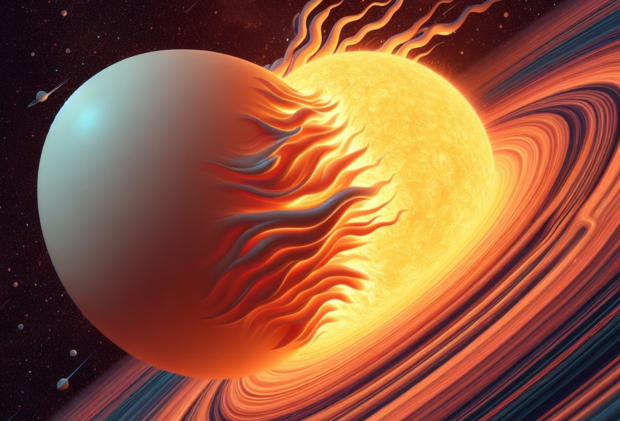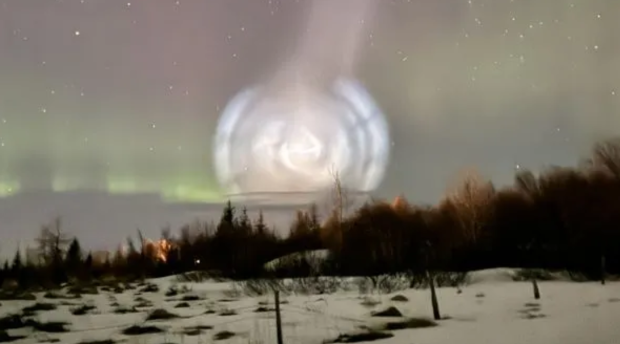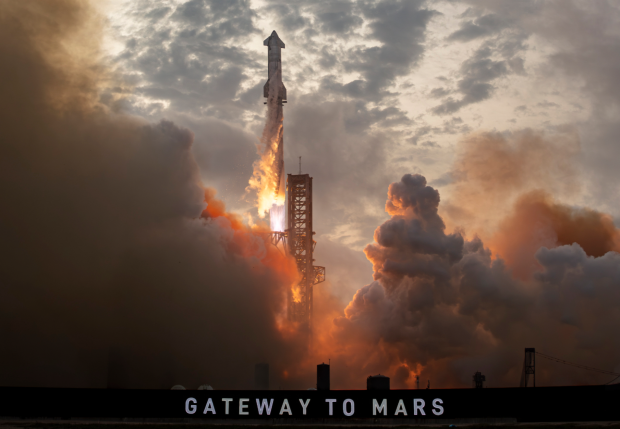Science, Space, Health & Robotics News - Page 7
China's AI robot tested on walk through rough forest terrain: stumbles, trips, but doesn't fall
Chinese robotics firm LimX Dynamics has just shown off the latest developments of its new Biped Robot P1, testing the AI-powered robot and its ability to walk through mountainous forest terrain as well as being hit with a huge piece of wood. Check it out:
The new Biped Robot P1 uses reinforcement training to respond to the real-world, where there are moving objects and disruptions in its past -- a forest setting with leaves, wood, and dirt is great -- allowing LimX Dynamics to train its AI algorithms. You can see the AI robot kicking up dirt as it walks, walking into huge bunches of leaves and getting out of it without falling over.
A human operator is also there pulling at it, and it doesn't fall... as well as being hit by a rather large and heavy piece of wood, the Biped Robot P1 doesn't fault. LimX Dynamics took to the Tanglang Mountain range in Shanghai, China to test out its robot, moving around and navigating through rough terrain meant that the P1 had to be continuously aware of its surroundings, pumping that into its AI algorithm, and responding to it through reinforcement training.
Researchers discover egg-shaped object in deep space caught in death spiral
WASP-12b was originally discovered in 2008 and since then has been a point of interest for many astronomers around the world due to its strange and relatively close proximity to Earth.
WASP-12b is an exoplanet orbiting its host star WASP-12, and the reason for its interest by astronomers is its strange egg shape and proximity of just 1,400 light years from Earth, which is close in astronomical terms. Additionally, astronomers have predicted that WASP-12b will eventually be consumed by its host star as its trajectory indicates a death spiral will occur, which will result in the exoplanet approximately twice the size of Jupiter being completely consumed by WASP-12.
Researchers previously estimated that WASP-12b would be consumed by its host star in approximately 10 million years, but new research suggests it will happen in just 3 million years. Notably, WASP-12b has such a narrow orbit that almost one year for the exoplanet, or one full orbit around its host star, is a single Earth day. Its extremely close proximity of just 2.1 million miles to its host star results in surface temperatures around 4,000 degrees Fahrenheit (2,210 Celsius) and such a strong gravitational pull from the star that it warps the exoplanet into an egg shape.
Elon Musk says his brain chip company is already curing blindness
After announcing earlier this year that the first human patient has received Neuralink's brain-computer interface (BCI) and is recovering healthily, Neuralink founder Elon Musk has said the company's Blindsight implant is "already working".
The recent announcement from Musk comes after his brain-computer interface company Neuralink livestreamed a long update on the first human patient to receive the company's implant, Nolan Arbaugh, a 29-year-old man who was paralyzed from the deck down following a tragic diving accident eight years ago. The livestream showcased Arbaugh controlling a PC cursor using his thoughts, Arbaugh saying he has been enjoying long Civilization IV gaming sessions, and a demonstration of Arbaugh using the BCI to play Mario Kart.
With progress being conducted on "Telepathy" the BCI implant within Arbaugh's head, Elon Musk has already begun talking about a new chip coming out of Neuralink. The founder of the company took to his personal X account to reply to a video of him on-stage at a Neuralink event explaining the company is working on curing blindness, even in people that were born blind. Musk said, "Blindsight is the next Neuralink product after Telepathy".
Continue reading: Elon Musk says his brain chip company is already curing blindness (full post)
SpaceX caused a massive swirl of white light to appear in the sky out of nowhere
Last week, astronomers witnessed a massive swirl of white light seemingly appear out of thin air in the night sky above the Arctic.
Reports indicate that this swirl of bright white light can be traced back to Elon Musk's rocket company, SpaceX. The rare phenomenon is being described by astronomers as a "SpaceX spiral" and is caused by an illuminated cloud of frozen fuel that was dumped by a SpaceX rocket while transporting cargo to low-Earth orbit. Astronomers expect to see many more of these "SpaceX spirals" as the company continues to advance its rocket technology and conduct more frequent launches into orbit.
So, what rocket caused this ethereal white spiral? SpaceX launched a Falcon 9 rocket on March 4 from Vandenberg Space Force Base in California, transporting 53 satellites into Earth's orbit. The mission was a success, and shortly after the payload of the rocket (the satellites) was deployed, the rocket's second stage, already detached from the first stage booster, began to re-enter Earth's atmosphere. As the rocket plummets toward Earth's surface, it begins to spin, dump its fuel, and burn up. The Falcon 9 first stage burned up above the Barents Sea in the Arctic.
SpaceX says when Starship is expected to take to the skies again
SpaceX recently hit a milestone with its third orbital launch of Starship, the world's largest and most powerful rocket.
On March 14, Starship took to the skies in its third orbital launch attempt, and while the mission ended in a fiery explosion, it was deemed a success by SpaceX as Starship officially reached orbit, checking off a major milestone for the company in its quest to create a viable transportation method to the Moon, Mars and beyond. As with every flight of Starship, and every rocket for that matter, engineers gather the data from the flight, analyze it, and make the appropriate changes to the design of the rocket to improve the chances of success for the next flight.
Upon re-entry, SpaceX was forced to execute a RUD protocol, or "rapid unscheduled disassembly," or boom. RUD was executed due both stages of the rocket, the Super Heavy booster, and Ship, breaking a part during their descent back through Earth's atmosphere. Now, SpaceX President and Chief Operating Officer Gwynne Shotwell has revealed at the Satellite 2024 conference in Washington on Tuesday March 19 that SpaceX is aiming to get Starship back into the skies for its fourth test flight in "about six weeks".
Continue reading: SpaceX says when Starship is expected to take to the skies again (full post)
Neuralink unveils first brain implant patient controlling a PC with their thoughts
It was only earlier this year that Elon Musk announced his brain chip company Neuralink had implanted the first brain chip into a human patient.
Neuralink has since taken to social media platform X to share an update with the first patient, a 29-year-old man named Nolan Arbaugh, who said he was unfortunately paralyzed from the neck down following a tragic diving accident eight years ago. The livestream on the Neuralink X account featured Arbaugh explaining the surgery for the implant was "super easy" and that he had to go through a learning process to differentiate "imagined movement versus attempted movement" in order to control a cursor on a PC.
The video shows Arbaugh using the brain-computer interface (BCI) to move a cursor around on the screen of a laptop, with the patient even saying that he was able to play Civilization IV for up to 8 hours and the only thing stopping him from playing more was the BCI running out of battery requiring a recharge. The livestream shows Arbaugh playing chess and then pausing an on-screen music player. Notably, not everything with the BCI is perfect, as Arbaugh says he has encountered some issues. However, Arbaugh said it "has already changed my life".
SpaceX satellites threatened to be shot down for being used by US military
A new report has revealed that SpaceX satellites may become a target of Russia over its purported use by the US military to gather intelligence.
The threats from Russia come after Reuters reported earlier this month that SpaceX signed a $1.8 billion deal with the National Reconnaissance Office (NRO) to develop hundreds of spy satellites designed to gather intelligence. This array of spy satellites is reportedly called Starshield, and according to one source who spoke to Reuters, it will be so vast that "no one can hide".
Now, a new report from Reuters reveals that Russia has threatened the US over its encroaching use of commercial satellites to expand its presence in orbit, saying they will "become legitimate target for retaliatory measures, including military ones," said foreign ministry spokeswoman Maria Zakharova to reporters. Notably, Germany recently warned in February that Russia is developing nuclear-powered anti-satellite space weapons that are capable of taking out all satellites within its range.
NASA confirms a special plane is being built to fly on Mars
One day NASA may fly a plane above the surface of the Red Planet, as the space agency is currently in the early stages of exploring the idea under its Innovative Advanced Concepts (NIAC) program.
NASA's NIAC program encourages the proposal of unique ideas that could transform the way NASA carries out its missions and one idea the space agency selected is called MAGGIE, or the Mars Aerial and Ground Intelligent Explorer. This conceptual technology has received NASA funding, and the above NASA-approved video showcases how Coflow Jet, the company behind the project, would carry out landing MAGGIE on the Red Planet and then deploy the extraterrestrial aircraft.
Notably, MAGGIE takes off vertically, just like a helicopter, and if you are wondering why that its designed that way there is one answer, Martian atmosphere density. Mars' atmosphere is extremely thin with a density of about 1% of Earth's, which means to generate enough lift for flight it must have many rotor blades spinning a speed much faster than a typical airplane on Earth. Just like taking off, MAGGIE is designed to also land vertically.
Continue reading: NASA confirms a special plane is being built to fly on Mars (full post)
NASA's asteroid that it crashed into changed shape into an oblong watermelon
In 2022, NASA launched a spacecraft at an asteroid to test if it was possible to deflect an asteroid should one ever be on a collision course with Earth. The test was deemed more than a success.
NASA launched its Double Asteroid Redirection Test (DART), which was a refrigerator-sized spacecraft at a 560-foot-wide asteroid named Dimorphos. This asteroid orbits a larger near-Earth asteroid called Didymos, with the smaller of the two (Dimorphos) orbiting its larger companion at a distance of approximately 3,900 feet, or one full orbit taking 11 hours and 55 minutes to complete.
DART successfully hit at an extremely high speed, and shortened Dimphos' orbital period by 32 minutes and 42 seconds, reducing Dimorphos' full orbit around Didymos to 11 hours, 22 minutes and 37 seconds. NASA writes in new press release that cites a study published in the Planetary Science Journal, Dimorphos' orbit slowly reduced over the following weeks, eventually reducing its orbital distance to 3,780 feet, or by about 120 feet.
Elon Musk says SpaceX's 400-foot-tall Starship will go interstellar
SpaceX has recently completed its third orbital test flight of the largest and most powerful rocket ever created, Starship.
Elon Musk, the CEO of SpaceX is already talking about how Starship will eventually be sent to other star systems, or solar systems to investigate the planets surrounding the target star. Musk took to his personal X account to write the Starship we are seeing launched lately is designed to explore the solar system, while a future Starship that will feature a much larger and more advanced design will be able to travel to "other star systems".
The details on this "future Starship" weren't given, but if Musk is planning on making an even larger rocket than the current Starship, it would need to be at least 401-feet tall, as the model stands fully stacked with its Super Heavy booster at a whopping 400-feet-tall, or 122 meters. Additionally, the current model is capable of carrying up to 165 tons to orbit, and comparatively, SpaceX's workhorse rocket, which is regularly used as a transportation method to orbit, is only capable of 25 tons.
Continue reading: Elon Musk says SpaceX's 400-foot-tall Starship will go interstellar (full post)











